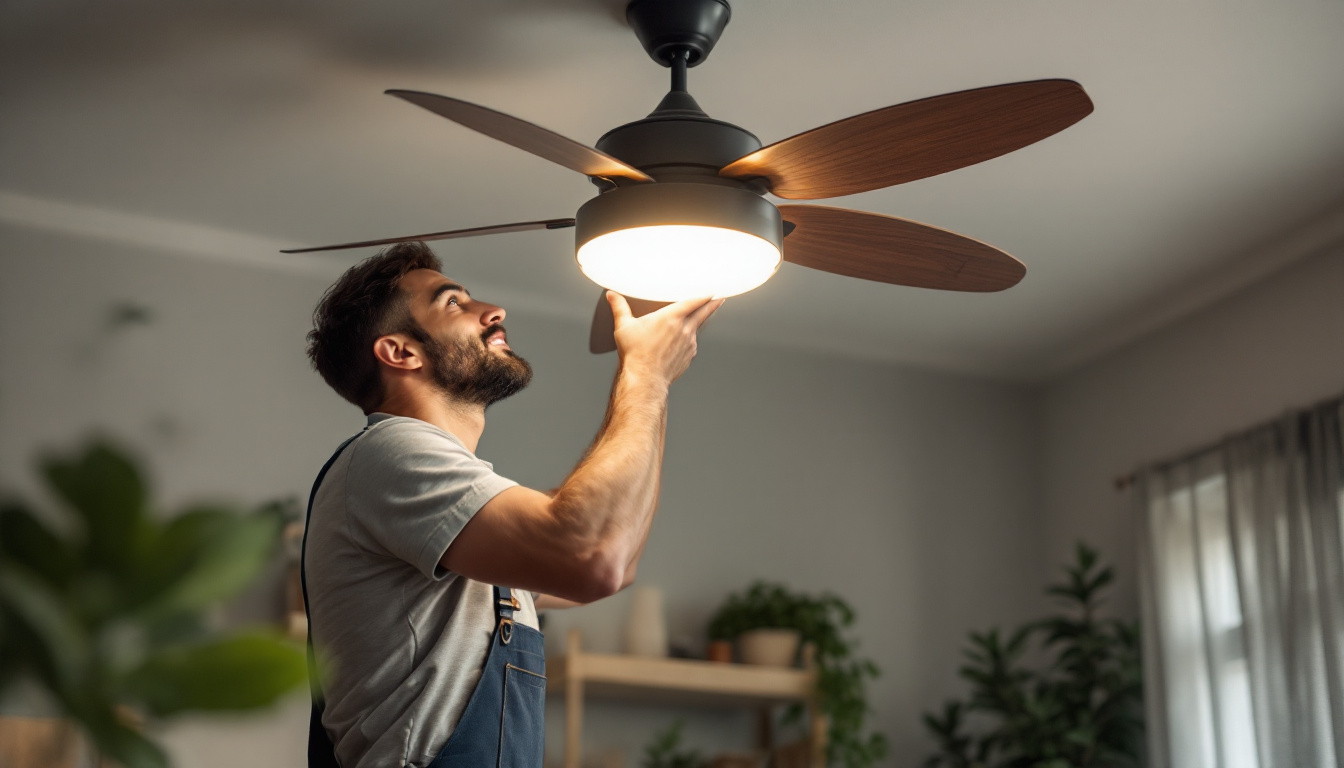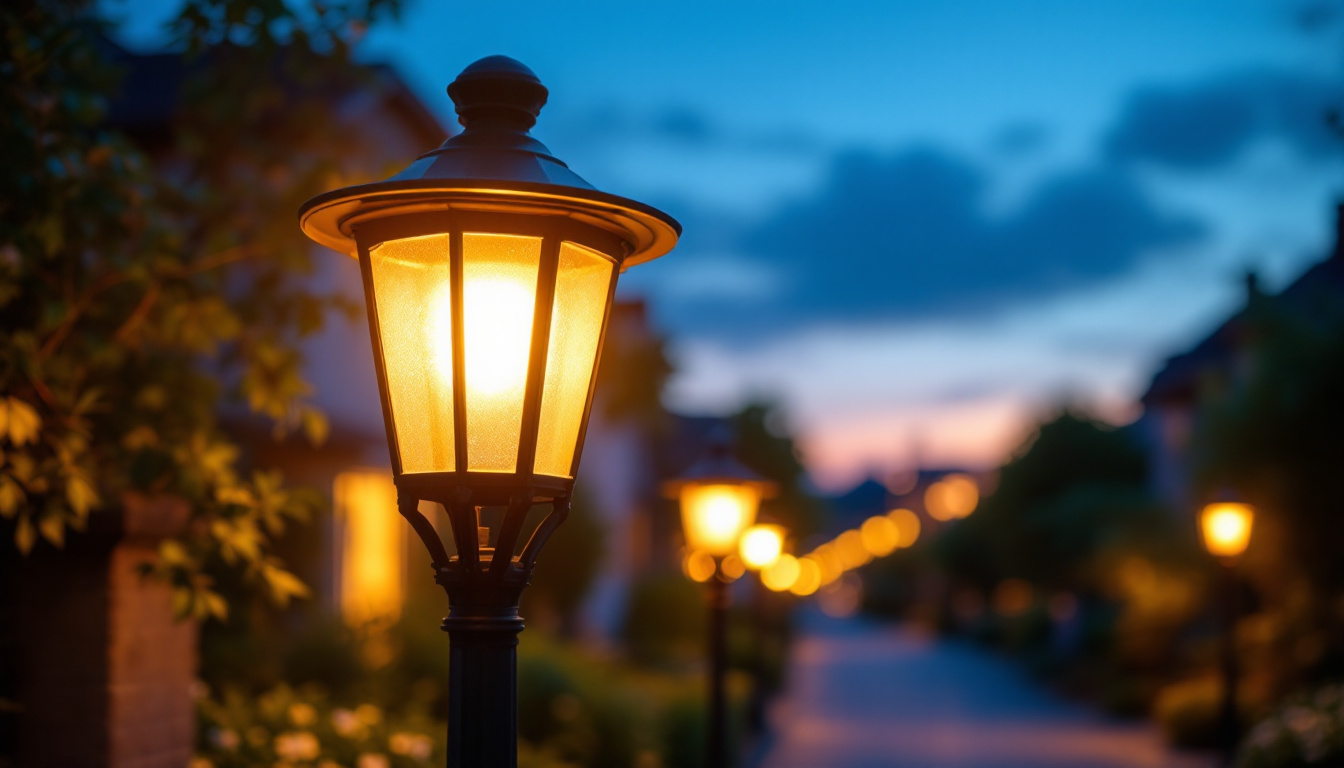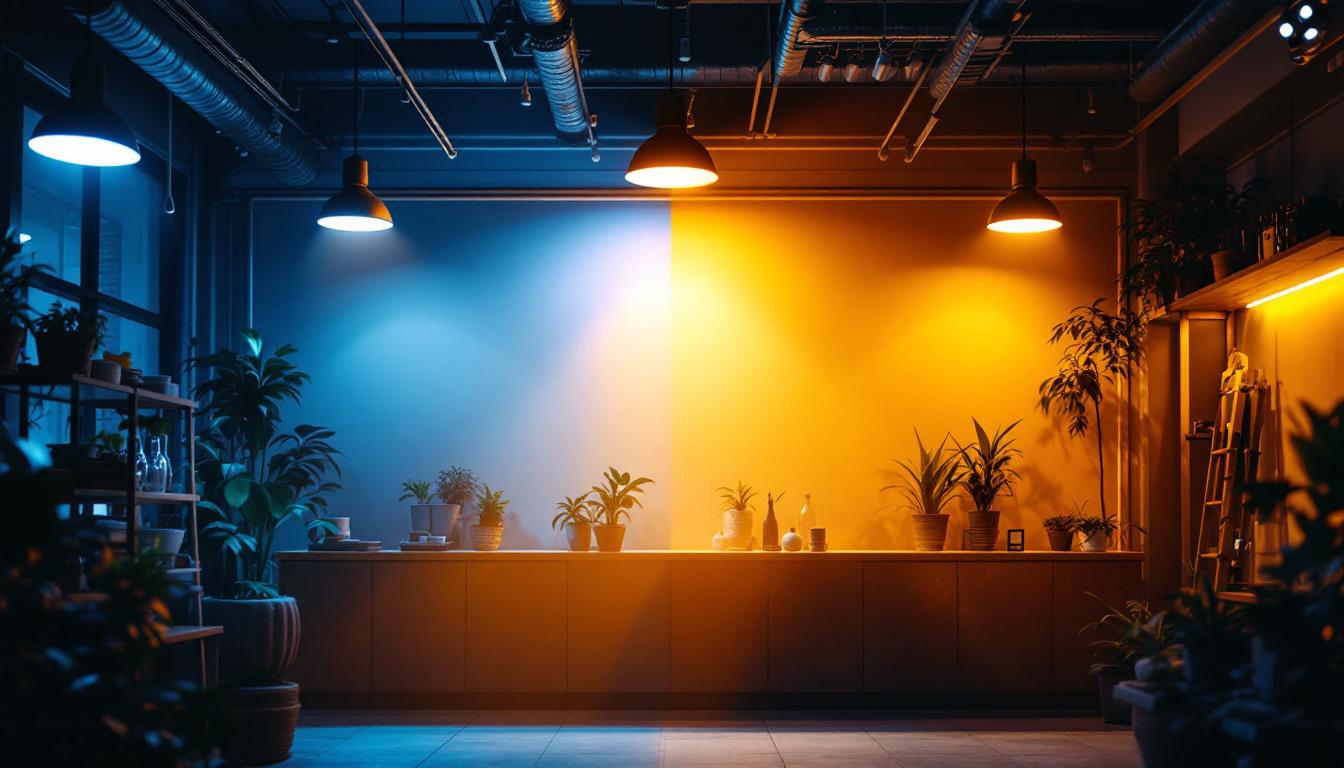
In the world of horticulture, the importance of proper lighting cannot be overstated. Whether for commercial greenhouses or home gardens, the right light lamps play a pivotal role in plant growth and development. This article explores how lighting contractors can leverage light lamps for plants to enhance their lighting solutions, ensuring optimal conditions for growth.
Plants require light for photosynthesis, a process that converts light energy into chemical energy. However, not all plants have the same lighting needs. Understanding these requirements is crucial for selecting the appropriate light lamps.
Photosynthetically Active Radiation refers to the spectrum of light that plants can use for photosynthesis, typically ranging from 400 to 700 nanometers. This range includes blue and red wavelengths, which are particularly vital for plant growth. When choosing light lamps, contractors should focus on those that emit light within this spectrum to promote healthy plant development. Additionally, the quality of light emitted can greatly influence plant morphology; for instance, blue light encourages compact growth, while red light can stimulate flowering and fruiting. Therefore, understanding the specific needs of each plant species can help in selecting the right combination of light wavelengths for optimal growth.
Different plants have varying light intensity requirements. For instance, succulents thrive in bright light, while shade-loving plants prefer lower intensities. Additionally, the duration of light exposure, or photoperiod, is essential. Some plants require long hours of light, while others may need a balance of light and darkness. Understanding these factors helps in selecting the right lamps and setting appropriate schedules. Moreover, it’s important to consider the seasonal changes in natural light, as indoor plants may need adjustments in their lighting regimen to mimic the longer days of summer or the shorter days of winter. This adaptability can significantly enhance the health and vitality of indoor gardens, allowing for year-round cultivation of a diverse range of plants.
There are several types of light lamps available, each with its unique benefits and drawbacks. Selecting the right type can significantly impact plant health and growth rates.
LED grow lights have gained popularity in recent years due to their energy efficiency and longevity. They emit very little heat, allowing for closer placement to plants without the risk of burning them. Moreover, many LED lights are adjustable, enabling contractors to customize the light spectrum according to specific plant needs. This adaptability makes them suitable for a wide range of horticultural applications. Additionally, LEDs can be tailored to emit specific wavelengths that promote photosynthesis, which can lead to faster growth rates and healthier plants. The initial investment may be higher than other types of lighting, but the long-term savings on energy bills and replacement costs often make LEDs the most economical choice over time.
Fluorescent lights, particularly T5 and T8 tubes, are another popular option for growing plants. They are relatively inexpensive and provide a good amount of light for seedlings and young plants. However, they are less efficient than LEDs and have a shorter lifespan. Contractors should consider using fluorescent lights in combination with other lighting solutions for a more balanced approach. These lights are particularly effective for growing leafy greens and herbs, as they provide a broad spectrum of light that supports vegetative growth. Furthermore, fluorescent lights are available in various color temperatures, allowing growers to choose the right spectrum for their specific plant types, whether they are aiming for lush foliage or vibrant blooms.
HID lights, including Metal Halide (MH) and High-Pressure Sodium (HPS) lamps, are known for their high light output. They are often used in commercial settings where large areas need to be illuminated. While they provide excellent light intensity, they also generate significant heat, which may necessitate additional cooling systems. This factor should be considered when designing lighting solutions for larger installations. Moreover, HID lights are particularly effective during the flowering and fruiting stages of plant growth, as the HPS bulbs emit a spectrum that encourages blooming. However, due to their size and heat output, these lights require careful placement and may not be suitable for smaller indoor gardens. Growers using HID lights should also be aware of the need for regular bulb replacement to maintain optimal light output and plant health.
Once the appropriate type of light lamps has been selected, implementing effective lighting solutions is the next step. This involves proper placement, timing, and maintenance of the lighting systems.
Light placement is critical for ensuring that plants receive adequate illumination. For instance, overhead lights can provide uniform coverage for larger areas, while side lighting can help target specific plants or areas that may be shaded. Additionally, adjustable fixtures can allow for easy repositioning as plants grow, ensuring that they receive consistent light throughout their life cycle. Furthermore, using reflective materials or surfaces around the growing area can enhance light distribution, maximizing the efficiency of the lighting setup. This technique not only helps in reducing energy costs but also promotes healthier plant growth by ensuring that even the lower leaves receive sufficient light exposure.
Creating a light schedule that mimics natural sunlight is essential for plant health. Most plants benefit from a cycle of 12 to 16 hours of light followed by a period of darkness. Automated timers can simplify this process, ensuring that plants receive the right amount of light without manual intervention. This automation can also lead to more consistent growth patterns. Moreover, varying the light spectrum during different growth stages can enhance plant development; for example, blue light is particularly beneficial during the vegetative phase, while red light can promote flowering and fruiting. By fine-tuning the light cycles and spectrums, growers can optimize their yields and improve the overall quality of their plants.
As energy costs continue to rise, finding energy-efficient lighting solutions becomes increasingly important. Not only does this benefit the environment, but it can also lead to significant cost savings for growers.
When selecting light lamps, energy efficiency should be a top priority. LED lights, for example, consume significantly less energy compared to traditional incandescent or HID lamps. Additionally, they have a longer lifespan, reducing the frequency of replacements and associated costs. Contractors should consider the long-term benefits of investing in energy-efficient lighting solutions.
Integrating smart technology into lighting systems can further enhance energy efficiency. Smart controllers can adjust light intensity based on environmental conditions, ensuring that plants receive optimal light without unnecessary energy consumption. Furthermore, these systems can provide data analytics, allowing contractors to monitor and optimize lighting performance over time.
Regular maintenance of light lamps is crucial for ensuring their longevity and effectiveness. Neglecting maintenance can lead to reduced light output and increased energy consumption.
Dust and debris can accumulate on light fixtures, obstructing light and reducing efficiency. Regular cleaning of lamps and fixtures is essential to maintain optimal performance. Additionally, contractors should keep track of lamp lifespans and replace them as needed to ensure consistent light levels.
Monitoring how plants respond to lighting conditions can provide valuable insights into the effectiveness of the lighting solutions in place. Signs of inadequate lighting include leggy growth, yellowing leaves, or stunted development. By observing these indicators, contractors can make necessary adjustments to light intensity, duration, or type to better meet plant needs.
Examining successful case studies can provide valuable insights into effective lighting solutions for plants. These examples highlight the importance of tailored approaches to lighting design.
In a commercial greenhouse setting, a combination of LED and HID lights was implemented to maximize growth rates while minimizing energy costs. The LED lights were used for seedlings, providing the necessary spectrum without excessive heat. Once plants matured, HID lights were introduced to enhance growth during flowering. This hybrid approach resulted in increased yields and reduced energy consumption.
An urban gardening initiative utilized fluorescent lights in conjunction with natural sunlight to create a sustainable growing environment. By strategically placing fluorescent tubes above planters, they were able to extend the growing season for various herbs and vegetables. This approach not only improved plant health but also engaged the community in sustainable practices.
The field of plant lighting is constantly evolving, with new technologies and approaches emerging regularly. Staying informed about these trends can help lighting contractors remain competitive and provide cutting-edge solutions.
As LED technology continues to advance, new products with enhanced features are becoming available. These include full-spectrum LEDs that can mimic natural sunlight more closely and smart LEDs that can be controlled remotely. Such advancements will allow contractors to offer even more customized lighting solutions to their clients.
With the rise of vertical farming, the demand for efficient lighting solutions is increasing. Vertical farms require specialized lighting systems that can provide adequate illumination in confined spaces. Contractors who can design and implement these systems will be well-positioned to capitalize on this growing market.
Light lamps for plants are a critical component of successful horticultural practices. By understanding plant lighting needs, selecting appropriate lamp types, and implementing effective solutions, lighting contractors can significantly enhance plant growth and health. As technology continues to evolve, staying informed about new trends and advancements will further empower contractors to provide innovative lighting solutions. Ultimately, the right lighting can transform any growing environment, leading to thriving plants and satisfied clients.
Ready to elevate your horticultural lighting solutions? Look no further than LumenWholesale for a comprehensive range of high-quality, spec-grade light lamps designed to meet the diverse needs of your plants. Our commitment to providing contractors with superior products at wholesale prices means you can access the best lighting solutions without the burden of inflated costs. With free shipping on bulk orders, LumenWholesale is your go-to source for efficient, reliable, and cost-effective lighting. Don’t compromise on quality or value—explore our selection today and discover the ideal lighting for your horticultural projects at the best value.

Discover essential tips and insights for lighting contractors on selecting and installing light fittings for ceiling fans.

Discover how to streamline your outdoor lighting projects with expert tips and insights tailored for lighting contractors.

Discover the frequent pitfalls lighting contractors encounter when installing commercial electric LED shop lights.

Discover how LED garage ceiling lights are revolutionizing the lighting industry for contractors.